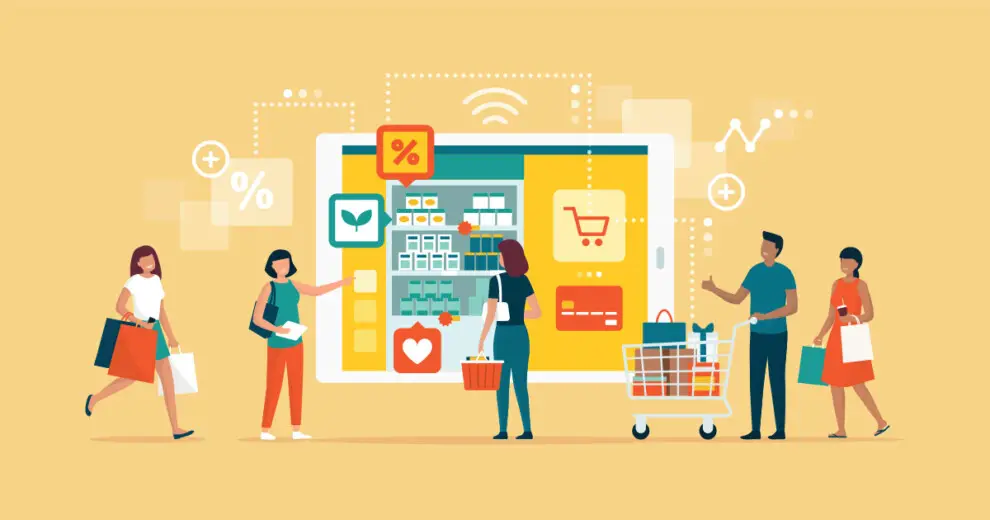The eCommerce industry is evolving, and brick and mortar businesses are adapting to the new marketplace. The way consumers consume, and sellers sell, online has changed in new and dramatic ways. However, traditional brick and mortars with online presence are right in the middle of this industry’s revitalization. Let’s look at the current trends, new and not so new, that are keeping businesses current and thriving.

The following are current trends of eCommerce that will undoubtedly shape the future of online shopping:
1. Mobile Commerce
Mobile device-initiated sales will encompass 53.9% of total eCommerce sales by 2021. For every purchase made on the computer, another was made on a smartphone. Purchases are even initiated on the phone and completed on the computer, and vice versa; this nonlinear buying model will become the norm if it hasn’t already. Retailers and eCommerce development services have and will continue to innovate selling methods based on mobile accessibility.
2. Social Media Selling
Online shopping sites are no longer sweeping social media’s selling power under the rug. Instead, Instagram, Twitter, and other platforms are used to drive sales, since the number of eyes in phones on social media sites translates to the number of potential consumers. Brands on social media are more likely to get the attention of millennials and Gen Z shoppers, taking advantage of the aforementioned increase in mobile traffic that will only continue to skyrocket.
3. Immersive Marketing
Retailers recognize that in-person experiences are still valuable, as people can only get so much from personalized recommendations and site chatbots. To replicate the in-store shopping experience, eCommerce stores are shifting their solely digital platforms to include physical locations. Through new brick and mortars, store pop-ups, and digital kiosks, retailers combine the best of both worlds to create a wholly unique and modern buying experience.
4. Sustainable Ecommerce
Consumers are more environmentally conscious, more thoughtful about the production process of their goods. They are responding better to a greener, more eco-friendly manufacturing and shipping practices, therefore online stores are adapting. Distributed manufacturing systems, zero-waste packaging, and sustainable technology stacks are current steps in the right direction.
5. Second-Hand Commerce
Second-hand or re-commerce is growing rapidly—a symptom of the larger demand for sustainability in retail. Moreover, there is always a market for thriftier shoppers wanting access to coveted products at lower prices.
6. Digital Assistants
Digital assistants and chatbots are common in most eCommerce and retail sites. Their effectiveness at filtering out common customer concerns allows businesses to focus on more pressing matters, and more shoppers receive solutions before human intervention is necessary. Additionally, newer AI assistants and chatbots are imbued with the ability to learn from past problems to better serve future customers.
7. Interactive Reality Experiences
Product visualization is one of the best trends in eCommerce. Websites have virtual fitting rooms to speed up the buyer’s decision-making process. Some retailers use augmented reality technology so that buyers can adequately visualize what a product will look like in person. Since customers can’t touch or hold a product when online shopping, interactive product visualization is the next best thing.




